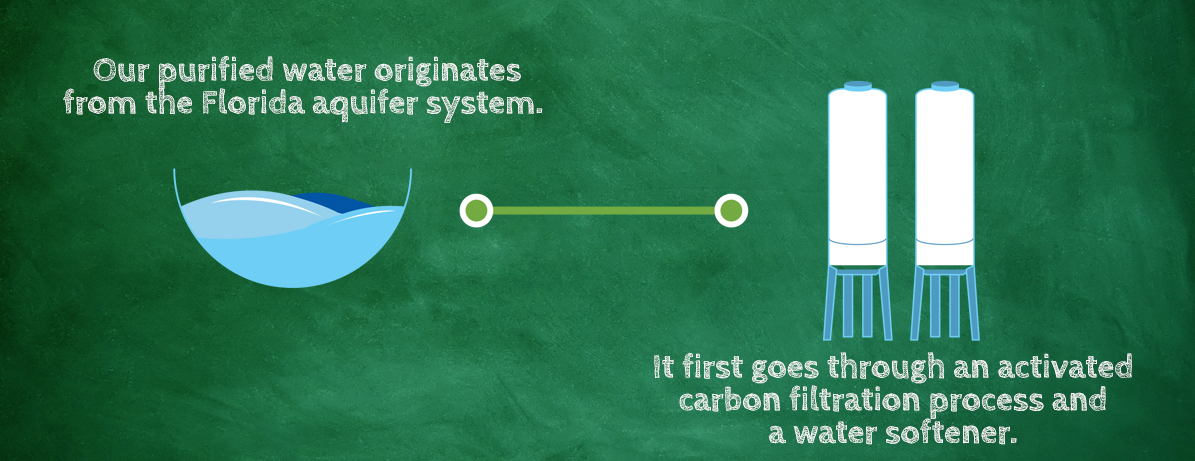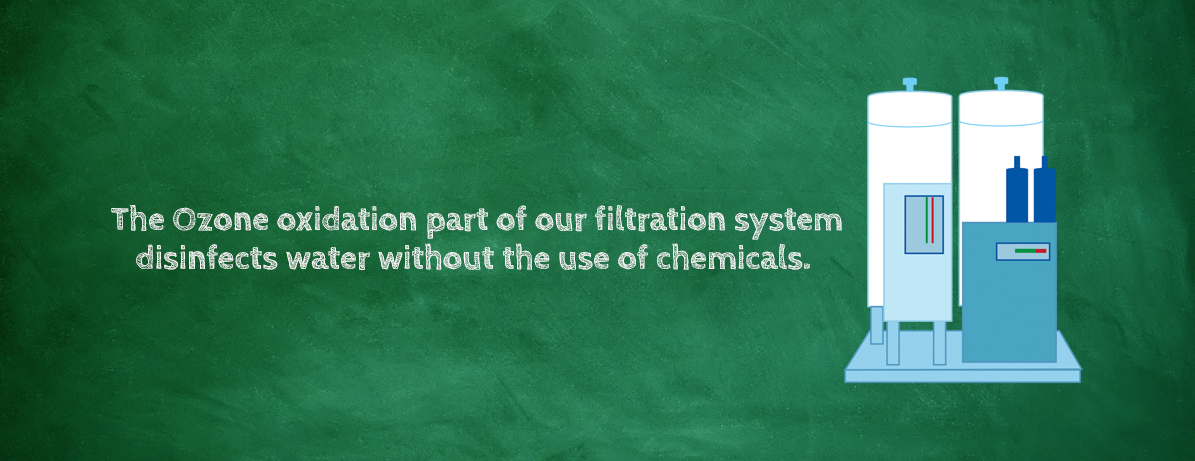
Our Water Purification Process
September 17, 2014It’s always good to hear that your bottled water is free of unwanted contaminants, but have you ever really given much thought as to how it got to that point? It sure didn’t come up from the earth that way!
At Azure Water, our bottled water is 99.9 percent pure, and goes through a rigorous process to get to that point. To give you some perspective, we’ve simplified the water purification process here.
Distilled vs. Purified Water
The difference between distilled water and purified water is an important distinction to make before we explain the purification process. Distilled water is created through the process of, you guessed it, distillation. Water is essentially boiled so that the pure water can be collected as steam while the contaminants remain behind. But there’s an issue with this method: many of today’s contaminants have boiling points that are below that of water. This means things like pesticides and herbicides boil off first and are collected with the pure water.
Purified water on the other hand, is free of almost all contaminants. To meet legal purified water standards, the dissolved solids in the water must be less than 10 parts per million. Purified water can be created from distilled water, it just has to be sent through many more filtration processes.
Water Collection

At Azure Water, our purified water originates from the Florida aquifer system. To remove any chlorines or THMs (trihalomethanes), the water passes through an activated carbon filtration process. The water is then sent through a water softener to remove unwanted harsh minerals, like sodium and magnesium.
Continued Filtration
Filter, filter and filter again. Our bottled water goes through even more filtration after the water softening process. Multiple micron filters are used to trap unwanted bacteria and other harmful microbes. The water then moves on to a UV light sterilizer which provides additional disinfection.
Reverse Osmosis and Ozone Oxidization

Reverse osmosis works by passing water through a semi-permeable membrane that only allows water molecules to pass through, leaving unwanted particles behind. All the previously mentioned filtration helps the reverse osmosis process work as smoothly as possible. While reverse osmosis on its own can produce purified water, too many contaminants will cause the filters to clog quickly, meaning a much slower purification process.
Once the water has gone through reverse osmosis, it travels to the ozone oxidization tank. Ozone oxidization is a wonderful thing, because it disinfects water without the use of chemicals. Unlike chlorine, ozone completely dissipates from the water once it has sterilized it, leaving only oxygen behind.
Recirculation and Bottling
At this point, the water is completely purified. To keep the water pure while it’s waiting to be bottled, it is recirculated with ozone added at intervals to keep the water free of impurities. At Azure Water, our blowing, filling and capping machines are Combi-Block, which means our bottles are blown, filled and capped inside one clean room. This leaves virtually zero chance for the bottles to become contaminated.
The bottles are then transferred into two high speed labelers, labeling 300 bottles per minute. With our two high-speed labeling machines, you can order anywhere from 10 to 5,000 cases of custom label bottled water a day! Each case is 24 bottles.
We hope that reading this process helps you understand just how much we care about our water. If you have any questions about our product, don’t hesitate to call or reach us on our contact form. You can also talk with us on any of our social channels; we’re excited to hear from you!
